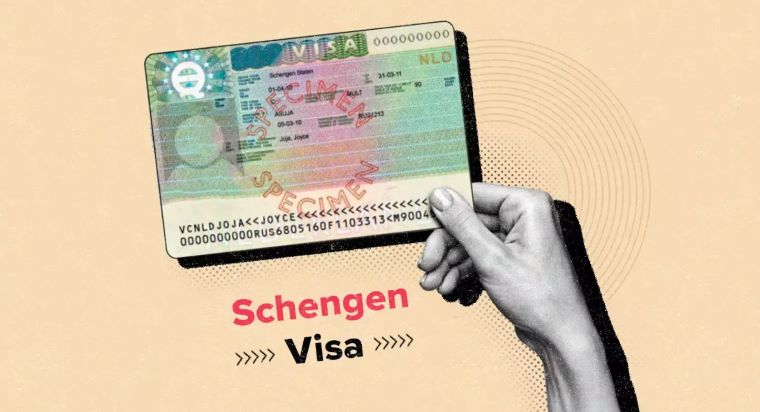Schengen Visa to Go Fully Digital by 2028: What Indian Travelers Should Know
The European Union is working toward making the Schengen visa process entirely digital by 2028. This change will phase out physical visa stickers and paper forms, replacing them with a secure, digitally signed 2D barcode tied to biometric data. This barcode will serve as the official visa.
How the New System Will Work
Applicants will use a centralized EU visa platform to:
- Upload required documents
- Pay visa fees
- Track the progress of their application
Only first-time applicants or those with expired biometric data will need to visit a visa center or consulate in person. Others can complete the entire process online. The encrypted barcode visa will be scanned at EU borders for verification, enhancing speed and security.
Why the Change?
The goal is to:
- Reduce visa fraud and forgery
- Speed up border crossings
- Cut administrative burdens
- Offer more transparency to applicants
This transformation aligns with the EU’s push for a more modern, efficient, and secure immigration system.
Upcoming Border Control Technologies
Two other key systems will be implemented alongside the digital visa overhaul:
- Entry/Exit System (EES) – By 2025–26, EES will replace manual passport stamping. It will use fingerprint and facial recognition to log entries and exits of non-EU nationals.
- ETIAS Authorization – By late 2026, travelers from visa-free countries (like the U.S., UK, and others) will need an ETIAS pre-authorization to enter the Schengen Area. It will function similarly to the U.S. ESTA system.
What Indian Travelers Should Do Now
- Prepare documentation carefully and well in advance.
- Ensure biometric records are up to date for in-person verification.
- Avoid dummy bookings or exaggerated travel plans.
- Follow updates from official consulates and visa centers.
Visa Officer Reveals Top Schengen Rejection Reasons: What to Avoid
A Schengen visa officer recently shared insider insights via an online Q&A. Here are the most common reasons Indian travelers face visa rejections:
Weak Ties to Home Country
The most frequent reason for rejection is the lack of strong personal, professional, or financial ties to one’s home country. Applicants who fail to prove they will return after their trip raise red flags. Owning property, having a stable job, or dependent family members strengthens the case.
Suspicious or Falsified Documents
Fake bookings for flights and hotels, fabricated financial records, or unverifiable claims are swiftly rejected. Visa authorities use verification tools that easily flag these discrepancies.
Unrealistic or Overloaded Itineraries
Travel plans that cover too many countries or cities in a short time appear unconvincing and raise concerns about the trip’s legitimacy. Simpler, more focused itineraries are viewed more favorably.
Poor Financial Justification
Applicants often fail to align their declared travel budget with their actual bank statements or job profile. For instance, a low-income applicant planning a luxury vacation without a clear financial sponsor is likely to be denied.
Cover Letters Are Not Enough
While many applicants focus on cover letters, visa officers rarely consider them decisive. Instead, sponsorship letters, employment verification, and official financial documentation carry far more weight.
Travel History Matters
A robust travel history—especially to countries like the U.S., UK, or Canada—can significantly improve one’s visa chances. It shows the applicant has complied with immigration laws elsewhere.
Nationality and Country of Origin
Unfortunately, visa systems are partially influenced by the applicant’s nationality and visa issuance statistics. Nationals from countries with higher overstay or illegal migration rates are often subjected to stricter scrutiny.
Key Takeaways
| Aspect | Details |
| Schengen Digitization | Full digital rollout by 2028 with biometric-linked barcode visa |
| Application Process | Online submissions, secure portal, no paper forms |
| First-Time Applicants | In-person biometric submission still required initially |
| EES and ETIAS | EES by 2025–26; ETIAS by late 2026 for visa-exempt travelers |
| Rejection Reasons | Weak ties to home, unrealistic plans, fake documents, poor finances |
| Visa Approval Tips | Solid financial proof, modest plans, verified documents, prior visas |
Final Thoughts
The EU’s push for a digital Schengen visa system is a major leap forward in convenience and efficiency. For Indian travelers, the shift promises faster processing, greater transparency, and fewer administrative hurdles—provided they meet the basic requirements.
At the same time, applicants must be aware of the key pitfalls that lead to rejections. Strong documentation, honesty, and simplicity in planning are essential for a smooth visa experience.
Stay informed, prepare thoroughly, and make your next European journey hassle-free.

